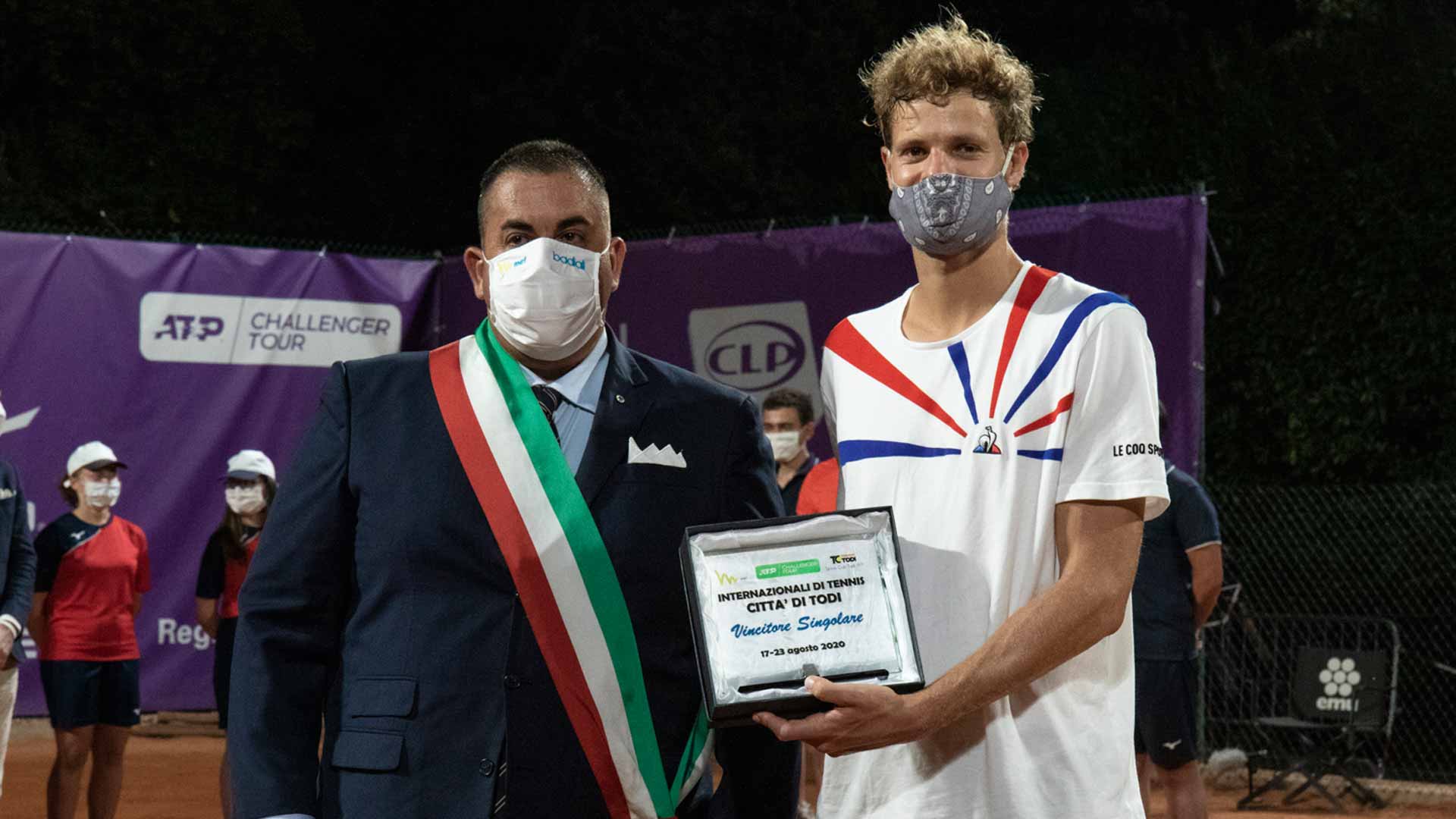The ATP Tour returns after a five-month suspension, due to the global COVID-19 pandemic, with the Western & Southern Open. Thiago Seyboth Wild upset Casper Ruud for the Santiago title on 1 March in the last ATP Tour match played. ATPTour.com looks at the storylines to watch out for at the ATP Masters 1000 event:
• Typically, the Western & Southern Open is held in Cincinnati and serves as the seventh of nine ATP Masters 1000 events. In 2020, the event takes place at the USTA Billie Jean King National Tennis Center in New York City, home of the US Open. The Western & Southern Open is the first ATP Masters 1000 event of 2020.
• With a new venue, the Western & Southern Open will be held for the 85th straight year and 119th time overall. Since the inaugural edition in 1899, the tournament has been staged every year except 1918, 1921 and 1935.
• World No. 1 Novak Djokovic leads a field that features five former champions and 16 players in the Top 20 of the FedEx ATP Rankings. In 2018, Djokovic defeated seven-time champion Roger Federer for his first Cincinnati title in his sixth final. With that win, Djokovic became the first player to capture all nine different ATP Masters 1000 titles in series history (since 1990).
• Djokovic is 18-0 in 2020 and is assured of tying Pete Sampras on 14 September for the second-most weeks (286) at No. 1 in FedEx ATP Rankings history (since 1973). Though he trails Djokovic by 3,175 points, No. 3-ranked Dominic Thiem could add as many as 3,980 points through Rome by 21 September.
Best Starts to a Season in ATP Tour History (since 1990)
o Novak Djokovic 41-0 2011 (43 straight wins from 2010-11)
o Novak Djokovic 18-0 2020 (21 straight wins from 2019-Present)
o Novak Djokovic 17-0 2013 (22 straight wins from 2012-13)
o Roger Federer 17-0 2018 (17 straight wins overall)
o Pete Sampras 17-0 1997 (20 straight wins from 1996-97)
• Daniil Medvedev defeated Djokovic en route to the 2019 Western & Southern Open title. Cincinnati was the third of six straight finals reached by the Russian, who narrowly fell to Rafael Nadal three weeks later at the US Open.
o Washington l. to Nick Kyrgios
o Montreal l. to Rafael Nadal
o Cincinnati d. David Goffin
o US Open l. to Rafael Nadal
o St. Petersburg d. Borna Coric
o Shanghai d. Alexander Zverev
• Medvedev and Djokovic are joined by fellow former champions Grigor Dimitrov (2017), Marin Cilic (2016) and Andy Murray (2008, 2011). Murray will be playing his first tour-level tournament of 2020. He is 18-12 since undergoing the first of two right hip surgeries in January 2018, highlighted by his 46th tour-level title in October 2019 at Antwerp.
• Andrey Rublev won his first 11 matches of 2020 and 15 straight matches dating back to 2019. Now 15-3 on the year, the Russian returns to the Western & Southern Open at a career-high No. 14. He was a 70th-ranked qualifier at 2019 Cincinnati when he upset Federer in 62 minutes – the Swiss’ quickest loss in over 16 years.
• Another 22-year-old with a career-high ranking is No. 24 Taylor Fritz. The Californian is one of 11 Americans trying to end the longest title drought for the host country in tournament history. Former World No. 1 Andy Roddick is the last American to win both the Western & Southern Open (2006) and the US Open (2003).
• The Western & Southern Open final is 28 August and the US Open begins 31 August, marking the shortest gap between the two tournaments since 1986. That year, Cincinnati ended two days prior to the US Open.
• All 56 main draw players and 36 qualifying losers at the Western & Southern Open are scheduled to play at the US Open. Odds are that one of those 92 players will win the US Open title, but it would be a rarity all the same.
o Stan Wawrinka is the last player to compete the week before a Grand Slam event that he won.
2015 Geneva QF followed by 2015 Roland Garros title
o Patrick Rafter is the last player to win a title the week before a Grand Slam event that he won.
1998 Long Island title followed by 1998 US Open title





